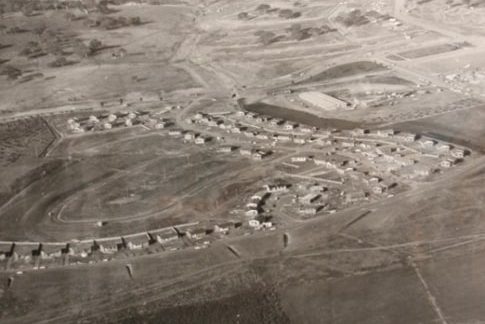
“Little consideration was given to the impact of improvements in electric bus technology or whether increased working from home could reduce the need for light rail,” writes former planner MIKE QUIRK.
IN 2019, the ACT government released the 10-year “ACT Infrastructure Plan” outlining $14 billion of projects across health, education, transport and community services.

It is being updated progressively over the next 12 months with two of seven sectors, Health and the Entertainment, Arts and Sports, recently released.
The plan identifies and prioritises the infrastructure necessary to meet community needs, support economic growth and foster environmental sustainability.
The provision of metropolitan-level facilities such as hospitals, convention centres, theatres, major stadia, tertiary education are primarily related to the expected population and its age structure.
Other infrastructure such as stormwater, water, sewer, power, waste management, social housing, schools, shops, playgrounds, playing fields, roads, public transport, cycleways, footpaths and trees are also influenced by the location of population and employment.
There is an increasing need to upgrade and renew infrastructure given policies to increase population in existing areas and infrastructure in Woden, Belconnen and Tuggeranong being up to 50 to 60 years old.
The “ACT Infrastructure Plan” does not provide a detailed justification of the projects identified or how their priority was determined. The long-term underinvestment in social housing and health (as documented by “CityNews” columnists Khalid Ahmed and Jon Stanhope) highlight deficiencies in the government’s budgetary processes.
Given the need to prioritise infrastructure, it is surprising the government has anchored its plan on the wobbly foundations of its “2018 Planning Strategy”.
The strategy promotes higher-density housing at major centres and along major transport corridors, supported by light rail, in order to reduce infrastructure servicing costs, travel times and the environmental footprint.
It aims to meet 70 per cent of ACT housing demand in existing areas. Greenfield development is identified as primarily occurring in Molonglo and west Belconnen and, by default, in surrounding NSW (contrary to the aim of reducing sprawl).
The plan identifies upgrades of major roads to reduce travel times for people in Belconnen, Woden, Gungahlin and Tuggeranong and provides rapid corridors for public transport and private vehicles.
The strategy was determined without analysis of housing preferences, housing affordability, paid little attention to employment location (despite its major influence on transport demand), land revenue, regional impacts and failed to establish an appropriate balance between infill and greenfield development through an assessment of relative environmental, social and infrastructure costs.
Furthermore, the government ignored assessments showing a busway would provide a similar level of benefit to light rail at half the cost for the Gungahlin to Civic part of the intertown public transport network.
It has failed to consider whether bus-based strategies are superior to light rail in providing sustainable and efficient transport in Canberra.
Possible strategies include increasing the frequency and coverage of the bus network; bus priority lanes and busways on their own right of way (which could be as effective as light rail in encouraging higher-density development along major transport routes).
Little consideration was given to the impact of improvements in electric bus technology or whether increased working from home could reduce the need for light rail.
Consequently, the priorities identified in the infrastructure plan are unlikely to best meet the needs of the community with funds not being used effectively. An urgent review of the infrastructure plan is needed to address the deficiencies identified above.
The escalation of construction costs from shortages of skilled workers and key materials also needs to be addressed in the review of the infrastructure plan.
The increased costs could mean the benefits of projects to the community are no longer sufficient to justify their cost. The review would assess whether the projects are still viable, inform their timing and determine what projects represent the best use of the limited public funds available.
Concerns about infrastructure costs blow outs led the Victorian government to delay by up to four years construction of a rail link to Melbourne Airport.
In NSW the multibillion-dollar Beaches Link motorway has been put on hold indefinitely, the second stage of the Parramatta light rail delayed by about five years and the estimated cost of the Sydney Metro West has blown out by $12 billion to more than $25 billion. In response, the NSW premier initiated an independent review of transport infrastructure projects to ensure they stack up.
The sage advice of Marion Tyrell, of the Grattan Institute, should be followed: if you find yourself in a hole, stop digging.
The aim should be to deliver quality services at the lowest long-term cost to the community. As the government has stated, good planning is needed to see Canberra remains a most liveable city where residents have good access to services, facilities, affordable homes, high-quality public places and transport infrastructure. It’s time we had some.
Mike Quirk is a former NCA and ACT government planner.
Who can be trusted?
In a world of spin and confusion, there’s never been a more important time to support independent journalism in Canberra.
If you trust our work online and want to enforce the power of independent voices, I invite you to make a small contribution.
Every dollar of support is invested back into our journalism to help keep citynews.com.au strong and free.
Thank you,
Ian Meikle, editor





Leave a Reply